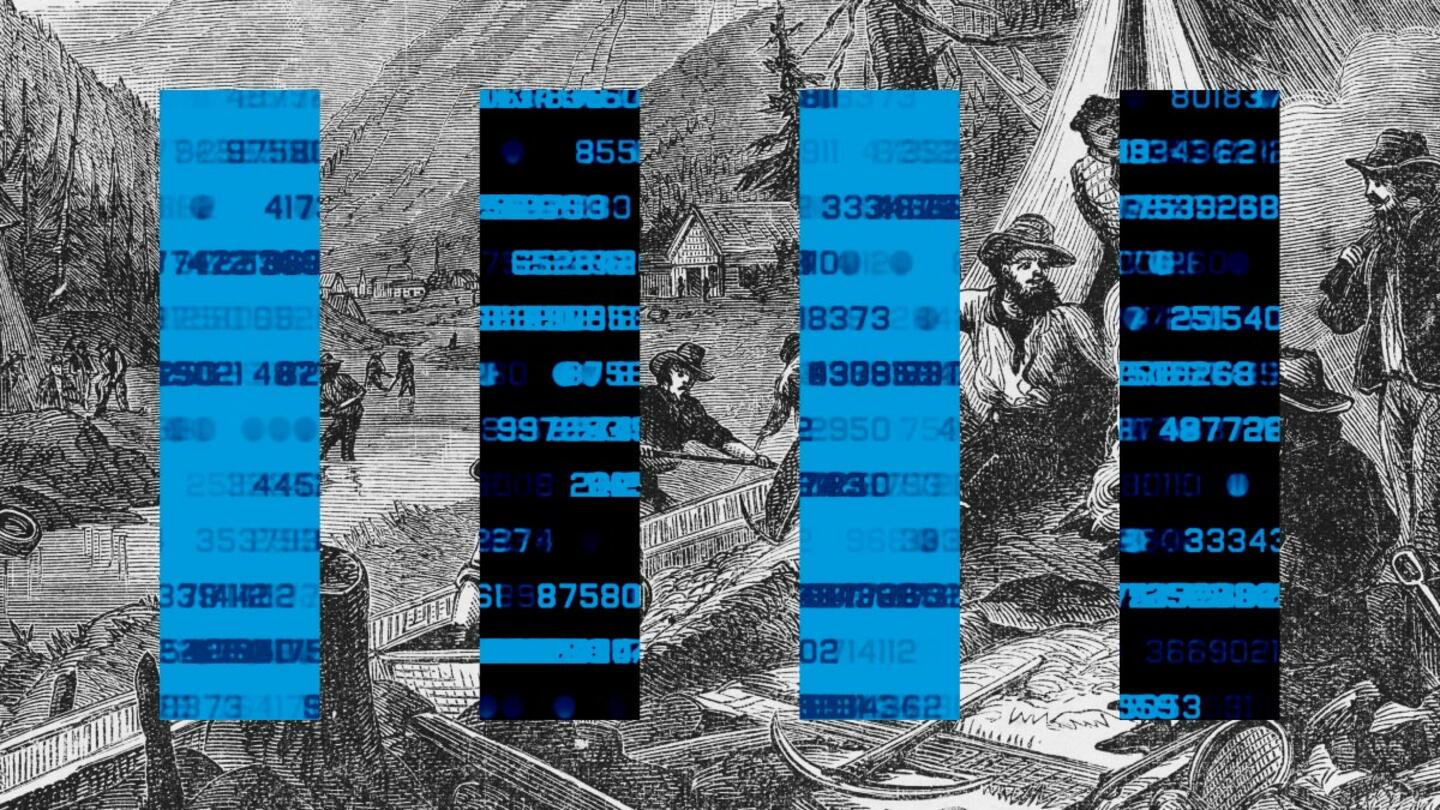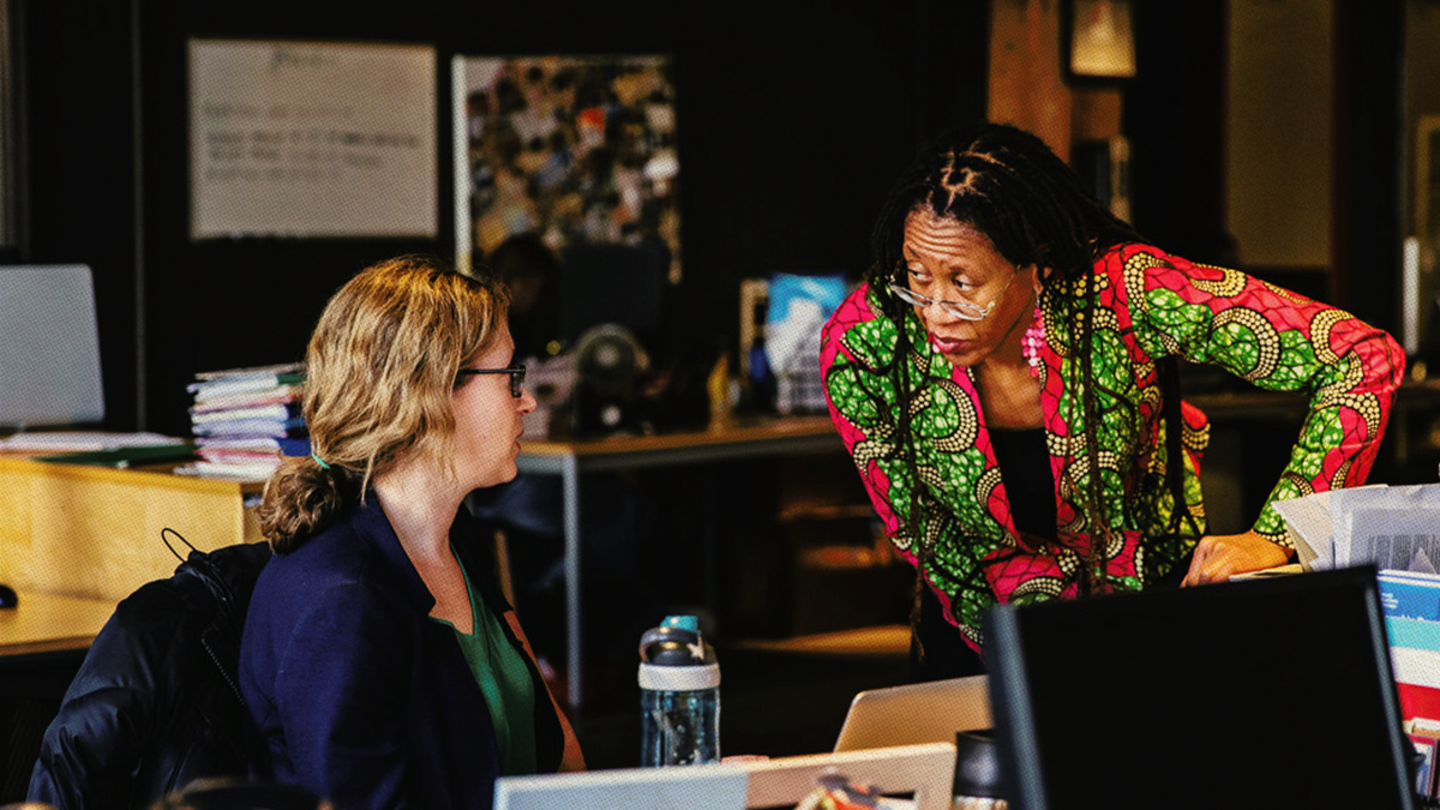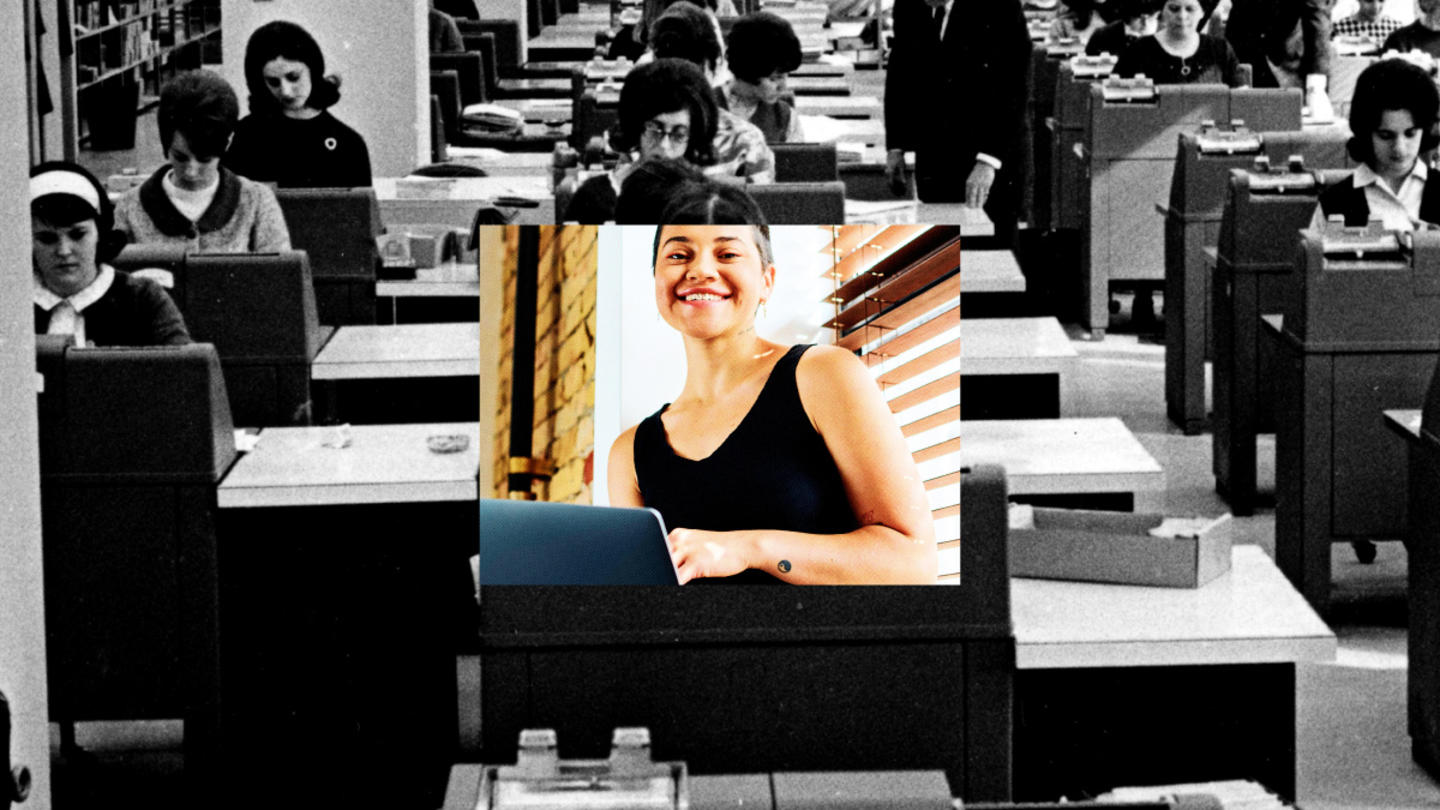Last year, 17.1 million members of Gen Z entered the workforce. Unfairly stereotyped as lazy or unmotivated, Gen Zers will soon outnumber boomers at work — but their style doesn’t have to be a problem.
With the right mindset, this demographic shift can be an opportunity that benefits companies and employees alike.
For the first time, there will be five generations working together simultaneously: millennials (defined here as those born from 1981-1996, although there is some debate), Gen X (1965-1980), baby boomers (1946-1964), and the Silent Generation (1928-1945), in addition to Gen Z.
Some believe this is an untenable mix, but five generations working together can actually be a major benefit to any organization. It starts with thinking a little differently.
Many employers are struggling to welcome Gen Z into the office. Three out of four managers polled by Resume Builder reported finding Gen Zers uniquely challenging to work with, saying they struggle to hire and retain workers from this generation.
These stereotypes miss a crucial truth: Gen Z brings a background and work style that can transform any workplace — if employers support them and connect them with the purpose of the organization’s mission.
“The newest generation is entering the workforce looking for that connection to something bigger than just a paycheck,” said Andy Tonsing, Stand Together’s vice president of Future of Work. “Purpose and flexibility are increasing motivators over previous generations at this stage when they were starting their careers.”
Gen Zers are emerging from a completely different set of educational and professional experiences than their older coworkers. They’re bringing with them new expectations for what the purpose of a career should be. Their unique skills and perspectives present an opportunity to complement the respective talents and working styles of workers of all generations — hinting at the possibility of a stronger workforce than we’ve ever seen before.
What makes Gen Z exceptional?
Gen Z isn’t the first “me” generation. Perceptions of Gen X and boomers went through similar phases.
Rather than being led by stereotypes, employers and coworkers should consider the historically unique circumstances that have shaped Gen Z. This generation has come of age through the Covid-19 pandemic and amid staggering student loan debt. As a result, their viewpoints on education and professional life tend to be broader and more flexible than previous generations — and that can be an asset.
The value of a traditional four-year degree has largely declined with this generation, paving the way for unique opportunities and nontraditional routes into the workforce — including apprenticeships, trade schools, and lived experience.
“A majority of Gen Z wants alternative pathways to the college route to prepare for a career,” said Tonsing. “They want the degree not just to prepare for filing work.”
Increasingly, a job is more than a paycheck for Gen Z. The age group cites personal fulfillment as the leading motivator behind their careers. Wealth is prioritized around half as much. Most Gen Zers (86%) and millennials (89%) say that having a sense of purpose is integral to their job satisfaction, with many saying that they would turn down a role that didn’t align with their values.
“Their pandemic experience showed them that they can pursue education and careers differently,” said Tonsing. “They’re asking, ‘Why can’t I have a little more flexibility around when and how I do my work? Do I need to be available from 9 to 5 if I can complete my tasks and my projects on my own time? Why do I need to spend four years in college? There’s this greater desire for flexibility, which is different than most previous generations going into the workforce.”
These perspectives may be distinct from older generations, but that’s not necessarily a bad thing. Gen Z’s values can encourage others around them to embrace more dynamic working environments, lifelong learning models, and openness to new ideas. Tonsing cited AI technology and career upskilling programs as two workplace tools where Gen Z has typically shown more open-mindedness than other generations.
“There’s this opportunity afforded by the openness of this new generation — a desire to be trained, to be ready for disruption,” Tonsing said.
Gen Zers’ unique focus on purpose and fulfillment in their work can lead to using their roles to contribute more meaningfully to society. This presents opportunities for employers to support Gen Z employees, understand their unique gifts and talents, and help them connect to significant work — potentially making entire workplaces stronger for it.
How to use generational differences as opportunities, not obstacles
Success in harnessing Gen Z’s unique contributions largely depends on how willing employers and coworkers are to embrace young workers’ individual experiences and strengths. By hiring Gen Zers, employers open opportunities to reconsider hiring practices, expand employee growth, and bring new ideas into work.
Tonsing pointed to online content creators who use Gen Z’s social media savvy to fill a labor gap left by boomers. As many boomers retire, skilled workers in manual trades like plumbing and construction are growing scarce. But Gen Z workers who have gone into these trades and been happy there are talking about their work on social media — encouraging their peers to consider paths beyond the four-year degree.
“It’s a huge opportunity,” Tonsing said. “You can play to the Gen Z desire for flexibility and entrepreneurship. From a company standpoint, maybe there’s a solution to filling some of these big labor gaps.”
Sign up for Stand Together's Rethinking Work & Learning newsletter to get the latest stories, ideas, and trends on the future of employment.
Having five generations in one workplace can be daunting for employers, but it can also be an exciting opportunity. To take advantage of the variety of skills and perspectives that each generation offers, Tonsing recommended employers foster workplace knowledge sharing, particularly through mentorship programs that pair young professionals with seasoned employees.
He also encouraged employers and employees to reflect on what “mental barriers” they might have — conscious or unconscious. For example, workers from older generations may only consider traditional education and career pathways to be legitimate.
Tonsing said leaders should ask, “How do you build openness in the workplace for managers?”
“Some people are going to gain skills in new and different ways,” he continued. “There should be an openness to people from different backgrounds.”
Researchers at Northeastern University’s Center for the Future of Higher Education and Talent Strategy found that hiring managers from nontraditional backgrounds were more likely to hire candidates with unconventional experience. Without the mental barriers others may have, these managers can secure talent that would otherwise be wasted.
The same goes for Gen Z. Just as older generations may harbor preconceived ideas about Gen Z’s work style, younger workers may be resistant to values that don’t mirror theirs or more traditional ways of working, such as communicating face-to-face or working in the office. While Gen Z introduces new and innovative working styles, the methods of their predecessors are equally valuable and deserve to be recognized.
If employers and employees of all generations can broaden their perspectives in this way, Tonsing is optimistic about the workforce and educational landscape of the near future.
For one, a more flexible workforce that welcomes workers of all backgrounds could influence education to be more open and individualistic, creating support for models like work-based learning, apprenticeships, internships, and life skills-based education.
This could create a more diverse workforce, bringing together individuals from various backgrounds who are empowered to contribute their unique talents and align with their true purpose. Tonsing described “moving from a narrow view of work as a means to economic mobility to viewing work as a process to uncover and develop your natural gifts and aptitudes to contribute to those around you.”
The circumstances that have shaped Gen Z can be intimidating for employers — but by recognizing and uplifting Gen Z’s singular values, the entire workforce stands to become more open, adaptable, and purposeful.
“People from different backgrounds, if they’re able to connect to their purpose, what you get is a more loyal workforce,” Tonsing said. “You get people who are going to come up with more innovative ideas for how to improve … embracing the openness of this generation.”
The Stand Together community partners with changemakers who are tackling the root causes of America’s biggest problems. Learn more about Stand Together’s efforts to transform the future of work and explore ways you can partner with us.

Why AI may help more people achieve the American Dream.

Data centers are at the forefront of the ‘new economy.’ But what exactly are they?

Here’s how to bridge the disconnect between employers and employees.

Lessons learned from Colorado.
